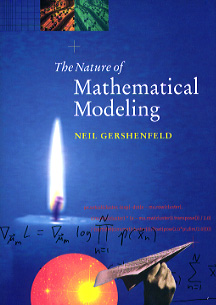
The Nature of Mathematical Modeling
Tuesdays 1:00-4:00 E14-493
Neil Gershenfeld
MAS 864
2014

Digital systems are routinely used to model natural systems for purposes ranging from transmitting realities, to experimenting with possibilities, to realizing fantasies. This course will survey the useful levels of description for such mathematical modeling, including analytical techniques, numerical methods, and model estimation. The focus will be on understanding how the methods relate, and on how they can be implemented efficiently.
The topics to be covered are:
| Contents | |
| 2/4: | Introduction, Graphics, and Math Environments |
| 2/11: | Ordinary Differential and Difference Equations |
| 2/18: | (Monday classes held) |
| Partial Differential Equations | |
| Variational Principles | |
| 2/25: | Random Systems |
| 3/4: | Finite Differences: Ordinary Differential Equations |
| 3/11: | Finite Differences: Partial Differential Equations |
| 3/18: | Finite Elements |
| 3/25: | (Spring Vacation) |
| 4/1: | Cellular Automata and Lattice Gases |
| 4/8: | Function Fitting |
| 4/15: | Transforms |
| 4/22: | (Patriots Day Vacation) |
| Architectures | |
| Density Estimation | |
| 4/29: | Search |
| Filtering and State Estimation | |
| 5/6: | Constrained Optimization |
| 5/13: | Computational Geometry |
| 5/20: | Final Projects |
| Bibliography | |
| Programs |
Relevant background for each of these areas will be covered, with introductory experience in linear algebra, calculus, and programming assumed. The assignments will include problem sets, programming tasks, and a semester modeling project. The course is based on the text The Nature of Mathematical Modeling, with revisions for a second edition to be provided throughout the semester.